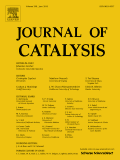
JOURNAL OF CATALYSIS
Scope & Guideline
Fostering Collaboration in Catalytic Research
Introduction
Aims and Scopes
- Catalyst Design and Engineering:
Research on designing and synthesizing novel catalysts, including heterogeneous, homogeneous, and biocatalysts, with specific emphasis on their structural and electronic properties. - Mechanistic Studies:
In-depth investigations into the reaction mechanisms of catalytic processes, utilizing advanced techniques like spectroscopy and computational modeling to elucidate how catalysts function. - Environmental Catalysis:
Exploration of catalytic processes aimed at reducing environmental pollutants, including CO2 reduction, wastewater treatment, and air purification. - Energy Conversion:
Innovations in catalytic processes for energy generation and storage, such as hydrogen production, fuel cells, and the conversion of biomass to fuels. - Photocatalysis and Electrocatalysis:
Studies on the use of light and electrical energy to drive catalytic reactions, particularly in the context of sustainable energy solutions. - Applications in Organic Synthesis:
Research focused on the application of catalysts in organic transformations, including selective oxidation, hydrogenation, and carbon-carbon bond formation.
Trending and Emerging
- Single-Atom Catalysis:
Research into single-atom catalysts has surged, driven by their high efficiency and specificity, making them a focal point in modern catalytic studies. - S-Scheme Heterojunctions:
The exploration of S-scheme heterojunctions in photocatalysis is rapidly increasing, highlighting their potential for enhanced charge separation and photocatalytic efficiency. - Defect Engineering:
A growing emphasis on manipulating defects in catalysts to improve their performance is evident, particularly in semiconductors and metal oxides. - Machine Learning in Catalyst Design:
The integration of machine learning and computational methods for predicting catalytic activity and optimizing catalyst design is becoming a prominent research area. - Electrocatalytic CO2 Reduction:
There is an increasing focus on electrocatalysts for converting CO2 into value-added chemicals, driven by the urgent need for carbon capture and utilization technologies. - Environmental Remediation Technologies:
Emerging strategies for using catalysis in environmental applications, particularly in the degradation of pollutants and waste recycling, are gaining significant attention.
Declining or Waning
- Traditional Catalyst Support Materials:
Research on conventional catalyst supports such as silica and alumina has decreased as newer materials like metal-organic frameworks (MOFs) and nanostructured materials gain attention. - Fossil Fuel-Based Catalysis:
As the field shifts towards more sustainable and renewable energy sources, studies focused exclusively on catalysts for fossil fuel processing are becoming less common. - Static Catalyst Systems:
There is a waning interest in static catalyst systems that do not incorporate dynamic or adaptive features, as researchers increasingly focus on tunable and responsive catalytic systems.
Similar Journals

Catalysts
Innovating Catalytic Solutions for Tomorrow's ChallengesCatalysts is a leading academic journal in the field of catalysis, published by MDPI since 2011 and well-regarded for its commitment to open access publishing. Based in Switzerland, this journal delivers innovative research and reviews that span various aspects of catalysis, from heterogeneous and homogeneous catalysis to the development of novel catalytic systems. With a commendable impact factor and a notable Q2 ranking in both Catalysis and Physical and Theoretical Chemistry categories, Catalysts plays a critical role in advancing the scientific discourse in these fields. The open-access model ensures that all research articles are readily accessible to researchers and professionals worldwide, fostering collaboration and accessibility to high-quality scientific literature. As the journal continues to publish cutting-edge studies up to its convergence in 2024, it remains an essential resource for anyone involved in catalysis research, from seasoned professionals to emerging scholars.
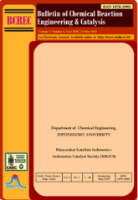
Bulletin of Chemical Reaction Engineering and Catalysis
Advancing the Frontiers of Chemical Engineering and CatalysisBulletin of Chemical Reaction Engineering and Catalysis is a distinguished open-access journal published by UNIV DIPONEGORO, focusing on pivotal advancements in the fields of chemical reaction engineering and catalysis. Since its inception in 2008, this journal has served as a vital platform for disseminating cutting-edge research, catering to a diverse readership that includes researchers, professionals, and students in chemical engineering and related disciplines. With its dedication to publishing valuable insights, the journal has been indexed in Scopus and boasts respectable rankings across various categories, including Q3 in Chemical Engineering (miscellaneous) and Q4 in Catalysis as of 2023. It continues to foster scholarly dialogue and collaboration by providing an accessible means for contributors to share their findings. Operating from Semarang, Indonesia, this journal underscores its commitment to advancing knowledge in chemical sciences, making it an essential resource for those engaged in the study and application of chemical processes.

CATALYSIS SURVEYS FROM ASIA
Unveiling Breakthroughs in Catalysis Across AsiaCATALYSIS SURVEYS FROM ASIA, published by Springer/Plenum Publishers, is a vital resource in the ever-evolving field of catalysis and chemistry. With a dedication to publishing innovative research and reviews from 2002 to 2024, this journal serves as a platform for the dissemination of significant findings that enhance our understanding of catalytic processes and their applications. Although its current impact factor is not explicitly listed, the journal holds a commendable Q3 ranking in Catalysis and Q2 ranking in Miscellaneous Chemistry within the prestigious Scopus database, indicating its relevance and quality among its peers. Open access options ensure that a broader audience can benefit from the research published, fostering collaboration and advancement in the field. By bridging the gaps between academic research and practical applications, CATALYSIS SURVEYS FROM ASIA is indispensable for researchers, professionals, and students committed to pushing the boundaries of catalytic science and technology.
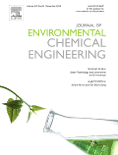
Journal of Environmental Chemical Engineering
Leading the charge in environmental chemical innovation.Journal of Environmental Chemical Engineering, published by Elsevier in the United Kingdom, stands at the forefront of integrative research in the field of environmental science and engineering. With an impressive impact factor that places it in the top quartile (Q1) across multiple categories, including Chemical Engineering (Miscellaneous), Pollution, and Waste Management, it serves as a vital resource for researchers and professionals dedicated to advancing sustainable chemical processes and technologies. Since its inception in 2013, this journal has continually focused on fostering innovation and disseminating knowledge that addresses global environmental challenges. With rankings that highlight its influence—22nd in Environmental Science & Pollution and 11th in Process Chemistry & Technology—the journal publishes high-quality articles that span both theoretical investigations and applied research. This dedication to excellence culminates in a comprehensive platform that not only shares significant advancements but also shapes the future directions of environmental chemical engineering.
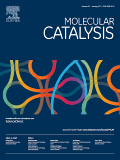
Molecular Catalysis
Advancing the Frontiers of Catalytic ScienceMolecular Catalysis, published by Elsevier in Netherlands, is a premier academic journal that explores the cutting-edge domain of catalytic science. With an impressive impact factor and classified in the top quartiles (Q2) in various fields such as Catalysis, Physical and Theoretical Chemistry, and Process Chemistry and Technology, this journal stands as a significant resource for researchers and professionals committed to advancing the understanding of catalysis processes. Since its inception in 2017, it has been pivotal in publishing high-quality, peer-reviewed research that addresses crucial challenges and innovations in molecular catalysis. The journal is fully Open Access, allowing unrestricted access to its articles, thus fostering a wider dissemination of knowledge. Recognized for its rigorous editorial standards, it features works that push the boundaries of current scientific understanding, making it an essential platform for students and academics alike to share and grow in their expertise.
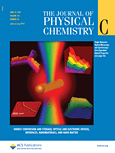
Journal of Physical Chemistry C
Pioneering innovative research in physical chemistry.The Journal of Physical Chemistry C, published by the American Chemical Society, stands as a pivotal resource in the realm of materials science and physical chemistry. With an impact factor reflecting its esteemed reputation, this journal showcases high-quality research spanning topics such as electronic, optical, and magnetic materials, as well as nanoscience and nanotechnology. Hailing from the United States, it operates without an open access model, yet its contributions are critical for advancing our understanding of surfaces, coatings, and films. Notably, the journal is classified in Quartile 1 (Q1) for several categories, underscoring its prominence in Physical and Theoretical Chemistry and related fields. Researchers, professionals, and students alike will find value in the comprehensive discussions and innovative research trends presented. The scholarly articles published from 2007 to 2024 not only drive forward scientific inquiry but also inform practical applications in various industries, making this journal an essential tool for anyone committed to excellence in the sciences.
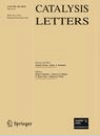
CATALYSIS LETTERS
Transforming Research into Catalytic SolutionsCATALYSIS LETTERS, published by Springer, is a distinguished journal dedicated to presenting original research and review articles in the field of catalysis and its various applications. Serving the scientific community since 1988, this journal has continuously evolved, providing a platform for the dissemination of innovative findings that advance the understanding and development of catalytic processes. With an esteemed Q3 ranking in Catalysis and a Q2 ranking in miscellaneous Chemistry for 2023, CATALYSIS LETTERS underscores its relevance and impact within these critical fields. Although it does not offer open access, the journal remains a crucial resource for researchers, professionals, and students seeking to stay updated on contemporary advancements and discussions in catalysis. Its Scopus rankings further affirm its contribution to general chemistry and chemical engineering, making it an essential publication for those immersed in this dynamic area of study.

Reaction Kinetics Mechanisms and Catalysis
Diving Deep into the Science of CatalysisReaction Kinetics Mechanisms and Catalysis is an esteemed academic journal published by SPRINGER, specializing in the fields of catalysis and physical and theoretical chemistry. With ISSN 1878-5190 and E-ISSN 1878-5204, this journal serves as a crucial platform for researchers and professionals to disseminate and engage with cutting-edge findings in reaction kinetics, catalytic processes, and mechanistic insights. Operating under an open access model, the journal ensures broad accessibility to its content, enhancing its impact within the scientific community. As of 2023, it is positioned in the Q4 category in catalysis and Q3 in physical and theoretical chemistry, reflecting its growing influence, yet also its potential for further advancement. Aiming to foster collaborations and innovations, Reaction Kinetics Mechanisms and Catalysis is poised to continue shaping the discourse in its field, making it an essential read for researchers, students, and industry professionals alike.

Science China-Chemistry
Bridging Knowledge Gaps in Chemistry WorldwideScience China-Chemistry, published by SCIENCE PRESS, stands as a leading journal in the field of chemistry, specifically recognized for its contributions in miscellaneous chemistry domains. With an impressive Q1 categorization in the 2023 quartiles and ranking at #35/408 in general chemistry by Scopus, this journal places itself within the top 91st percentile, showcasing its significant impact in the discipline. The journal, based in Beijing, China, provides a platform for innovative research, reviews, and insights that cater to an international audience of researchers, professionals, and students dedicated to advancing chemical science. As an open-access journal, it ensures widespread dissemination of knowledge, making cutting-edge research accessible to all. With converged years from 2010 to 2024, the journal continues to be a vital resource for those engaged with the latest developments in chemistry.

Catalysis in Industry
Fostering collaboration in the world of catalysis.Catalysis in Industry, published by MAIK NAUKA-INTERPERIODICA, is a pivotal journal in the field of chemical engineering and catalysis. With its ISSN 2070-0504 and E-ISSN 2070-0555, this journal has been dedicated to advancing the understanding and application of catalytic processes in industrial settings since its inception in 2010. Despite its Q4 ranking in the category of Catalysis as of 2023 and a Scopus rank of #61/68, the journal serves as a valuable platform for researchers and practitioners to disseminate innovative ideas and findings that contribute to the evolution of catalysis technology. Published in Russia, Catalysis in Industry aims to bridge the gap between academic research and industrial practice, providing Open Access options to facilitate widespread accessibility and encourage a collaborative approach to chemical engineering challenges. As the industry grapples with the demand for sustainable solutions and efficient processes, this journal remains a critical resource for the academic community, aspiring professionals, and students eager to deepen their knowledge in catalytic applications.